- Home
- M G Vassanji
A Place Within Page 2
A Place Within Read online
Page 2
There was one fatal flaw to this scenario. India was undergoing an upheaval; my visit to the homeland also coincided with a barbaric blight which afflicts it periodically. Its disturbing reverberations followed me in my journeys, making themselves felt dimly and distantly, until finally the reality of the horrors of the “riots” became impossible to ignore. To be as resigned to the violence as many of my new Indian friends and acquaintances were, I realized, I would have to be born here. I was not.
I spent the day after my arrival with my host while recovering from my long flight. I do not much remember that day; I drove around a lot with him, asked many questions. Early the next morning I headed off to the railway station in a rickshaw and caught a train for Bhubaneswar, a distant city on the east coast. Thus I began a tour of India that over its course took on the aspect partly of a pilgrimage and partly a revelatory voyage. And because it was a single, continuous experience, here I describe it whole, in an edited form of the journal I kept.
The Puri Express: A Train Journey
Indian Airlines is on strike, private airlines are irregular and few. Krishan Chander has booked us seats on the train for the conference in Bhubaneswar, Orissa, on the east coast. Privately, I feel somewhat pleased at this turn of events, though thousands of middle-class Indians are practically hostage to the strike—and the tourist industry is suffering badly. But travelling across India by train is how I have always imagined seeing the country. City-hopping by plane was how I was advised to travel by my hosts. On my last visit to East Africa, I came upon the realization that there’s nothing like an extended journey on land for thoroughly purging the spirit of North American puritanical cleanliness, of the fears acquired abroad: fear of disease at every corner and therefore of every food; fear of contact, fear ultimately of the smell of people.
And so the Puri Express, second-class AC (air-conditioned).
Second AC is how the middle class travel; it provides a modicum of privacy, compared to ordinary second. There is no third class. There are four berths to a compartment, each of which can be closed off at night by a blue curtain. Across from each compartment along the aisle are two seats facing each other next to the window, under an upper bunk. This is where I find myself. The back rests of the seats are folded when required to form the lower bunk. Each of these bunks can also be closed off with a blue curtain. At night you either worry about your shoes and luggage, which you’ve left in the dark on the floor, or you take in the shoes and your small bag with you and tie your larger bag to the leg of a seat using a thick metal chain with a padlock, a contraption which apparently can be bought at the station.
I drink in every sight. What I see, however, seems rather plain. I have been spoilt by land journeys in childhood: African plains covered with giraffe, zebra, wildebeest; elephants crossing the road; the roar of a lion; roads climbing up geological faults and craters. It seems, in comparison, that the cameras that have filmed India have been kind. We roll through drab, yellow plains; pass the backsides of occasional towns and villages; sun and languor and empty fields. A few men crouching among the dry grass, presumably to relieve themselves; a slow walk upon a trail; closer to town boys play cricket; hovels huddled together. Once, an open-air classroom, in a half-built or ruined house. And then more plains, the rocking of the train, the clackety-clack.
Opposite me, a young cameraman sulking because the airline strike has forced him to take the train; his large suitcases block the gangway. Periodically his producers, a young man and woman, come by to pamper him. Across the aisle from us, in the four-berth compartment, the party I belong to: a group of academic women, knitting, holding Reader’s Digests in their laps, discussing trips to Austria, the United States. I am known to be from “there.” These people have a sense of the overseas, they know (they think) what I am used to. Sympathy is offered me for the discomfort of train travel. No mention of the recent disturbances here, in the wake of the mosque demolition in Ayodhya, though the papers are full of diagnoses of the country’s current sickness.
I watch the hovels flying past, dark gaping mouths housing extreme poverty. How can these sights horrify, surprise, raise any emotion, if you’ve seen Ray’s Pather Panchali and already responded appropriately? This is India that’s passing me by, that moved me many years ago as a student. One wishes one could shut out the chit-chat (and yet that is also India) and somehow look inside these huts, spend time in their barren yards, touch the life there. A fatuous thought. Do I simply yearn for the exotic, for its shock, to tell myself I have now been in India, really seen it? I wonder, as I watch these hovels, which is Hindu, which Muslim. Once in a while, a Muslim shrine, a built-up grave, alone under a tree, whitewashed, flat upon the earth; and sometimes a Hindu shrine in a field, a little temple housing a deity. Would these simple people that we pass get up and kill their neighbours in a frenzy of hatred? What would they be like, at such times?
At Allahabad, Krishan Chander takes me out to the station platform, tells me of the claim to fame of this city: the Nehru family residence. He treats me to some guavas from a vendor’s cart, a specialty of the city, he says; sweeter than the sweetmeats, he grins. Have you had them before? he asks. We had them in Africa, I tell him, though they were somewhat smaller there. They were considered a wild fruit and we ate them with red chillies and salt. Everything is bigger here.
Later on, a fellow passenger, a Jain mathematics professor making a pilgrimage, is bade goodbye. My host is ebullient, generous. “You Jains are hard-working,” he patronizes in his innocent manner. “My father used to say the Jains have contributed the most to this country. We Brahmins haven’t done much.”
“You didn’t have to, did you?” retorts one of the women in our party, evidently also a Jain, thus exposing a raw nerve.
There is so much of India, I tell myself. How does one get to it? I would like to reach out and touch it, it feels so close and familiar, yet there seems a glass cage around me.
Even I know when we reach a Bengali station. It is dawn, but there is noise, there is colour, there are signs of life outside of the railway. The station is Kharagpur, a junction for trains going south. Every wall is covered with slogans and messages, posted or painted in large black letters: calls to demonstrate in Calcutta or Delhi; Communist Party meetings; women’s demonstrations; marches against communalism (as the Hindu-Muslim conflicts are called). The hammer and sickle is evident, comfortable in a way I’ve never noticed before. The ruling party in Bengal is communist. On the platform, the air is cool, humid; a pleasant feeling. There is the ubiquitous tea and newspaper stall. A beggar touches my feet; somewhat surreptitiously I slip him a coin. Very soon three of them surround me, I race inside.
And then, when the train gets on its way, suddenly there comes a song in Bengali, from inside a curtained compartment nearby, so beautifully sung and spontaneous that a feeling of joy has stirred inside me. A morning raga on a train in Kharagpur station. So unbroken and clear is the voice, I fear that against my dearest wish it might be from a recording. I inquire. No, I am told. It’s a real voice. Bengali homes have a long tradition of providing singing lessons for girls, Krishan Chander tells me proudly. He himself is Punjabi.
If I were looking for an epiphany of the genuine India, outside of the spoilt and pouting cameraman from Delhi who is going to film temples, outside of the city banter of the four foreign-travelled academic women across from me, outside of the homilies of my genial host, then this child’s singing is it. I realize that I have to let India happen and respond to it accordingly; I cannot go anxiously searching for it, seeking nuance under every stone and behind every wall.
The train reaches our destination, Bhubaneswar, thirty hours after departure and some hours late, and we are met by frenzied local hosts and transported by taxi to our residences. I am to stay at the state guest house.
Bhubaneswar, Orissa: Premonitions of Fire in a Land of Temples
Orissa lies on the Bay of Bengal, south of West Bengal state. It is poor and rural, thou
gh more than two millennia ago the strong Kalinga kingdom had domain here, whose influence spread all the way across the sea to Java, Bali, Sumatra, and the Philippines, and perhaps, speculation has it, to East Africa, for the Sun Temple at Konark has a giraffe among its carvings of animals. The emperor Asoka attacked and conquered this land in 261 BC in a war so terrible, it is said, the rivers flowed red with blood. A remorseful Asoka soon after became a Buddhist.
The first impression of this capital city, Bhubaneswar, is dusty streets, brown earth in a glaring sunlight, stray dogs quietly scampering about, looking busy over, it seems, nothing.
There is overwhelming warmth shown me here, the visitor from abroad but one of us. People want to talk, confide, be of service. The young men are respectful, the older ones friendly, the women charming. Then there is something else in the air, like smoke from charred remains…
A sign in large letters high on the wall of a university residence: “OH MUSLIMS LOVE INDIA OR LEAVE INDIA.” Who painted the sign? It could not have been done without being noticed. Why is it still there, day after day?
There is sadness and resignation at the state of the country. Many foreign delegates have stayed away because of the troubles. The federal government is blamed for failing to deal with them. An elderly professor wonders if Nehru had not made a mistake in his idealism, in his dreams of democracy. What does he mean, I wonder. A secular dictatorship as in China? A religious state like Pakistan?
Mohamed is a professor from Gujarat. I meet him at four in the morning when he knocks on my door, having just arrived. He has come to the wrong room, he is supposed to be sharing with Krishan Chander. The next morning Mohamed and I meet again. Instantly, past the first introduction, he starts talking to me in Kutchi, and we speak as if we have spoken this way all our lives. I was brought up speaking both Kutchi and Gujarati. A Muslim, Mohamed feels victimized, a little afraid. He is married to a Hindu woman and wants to remain aloof from the subject, but every time the troubles get mentioned, he cannot resist an outburst, for his is an excitable nature, with a lot of humour, I think, to hide the bitterness. He is from the Memon community and tells me in his typical manner that when he was little, in his village, he would be warned to stay away from the vicinity of the Khoja khano; for it was believed that the Khojas (my people) would catch a child and drive a nail through its head to drink its blood. We laugh, but I push back a nudge of discomfort inside me. I, too, was brought up with prejudices, though none as blood-red as this one.
The rest of the delegation from Gujarat arrives twenty-four hours late due to the riots. Oh yes, they say nonchalantly, Ahmedabad is still burning. And yes, they tell me, please come to Gujarat, but not on kite day, a Gujarati festival; it might provide just the opportunity for a riot.
Am I not supposed to be afraid? These are moments when I feel pushed away; on one hand I receive the confidences and treatment due an insider, one of them; then I become the outsider, someone who doesn’t know and has to be protected, someone who hasn’t lived close to the fire and felt the heat.
There exists a sentimental though powerful notion of this country as Mother India, an object of worship. The sixties’ film of that name was the mega tear-jerker of all time, you had no heart if you emerged from the cinema dry-eyed. It tells the story of a mother’s sacrifice for her children and her nation. Of the few scenes I have always been able to recall from this film, one is of a wedding, a beautiful bride bidding farewell to the paradise that has been her home, a gut-wrenching song in the background; another has the young woman, played by the actress Nargis, searching from village to village and door to door for her husband, singing a lament; and finally a less vivid but still unforgettable scene of a raging fire. Fire, that most potent and ubiquitous Indian symbol: fire of the Vedic sacrifice, the cremation, the wedding ritual, the bride-burning; and the fires of the riots. Fire, the agent of destruction.
“City people are like biscuits,” he says. “They are the same everywhere.”
He’s a lecturer in nearby Berhampur, a newspaper man, an Oriya poet. A short stocky man in bush shirt, whose brown even teeth look as if they’ve had a dip in jaggery. He believes in folk motifs, he tells me, a people’s poetry. He writes of the hungry and the displaced, of those who have to sell their children to survive in the arid, undeveloped waste of Orissa. “You should see a village, visit the tribals.” “Tribals” are the aborigines of the country, also called the “Adivasis.” I never knew such people existed. I had known of the canonical four Hindu castes, and then there were the Muslims, Sikhs, and Christians. Now these. Having given me his confidences and opinions for a good part of a day, my new friend finally takes me and a few others to a jatra, which he translates as “opera.”
The jatra starts at eleven and goes on for most of the night. The reason for these hours, explains our host, is so that people who live far don’t have to walk back home in the middle of the night. We have also acquired by now another host, a retired police inspector general. We’ve been told he comes from an accomplished literary family, his brother is a well-known dramatist in Delhi. It is perhaps because of him that we receive our VIP treatment, seats close to the stage.
The jatra is a travelling show, therefore thoroughly professional. It is also the poor people’s night entertainment. It takes place inside a large tent on dusty ground on the city outskirts. As we arrive, there are crowds waiting to get inside. Outside the entrance: stalls of food, tea, paan, cigarettes. The crowd is predominantly men, youths or a little older, in shirts and trousers, a shawl draped across the shoulder for the chill. They are, I am told, working people, living mostly in shanties. Women are not present—except for the few young companions brought along—because someone has to stay behind to mind the children and the home. Among the middle classes, it appears, this mode of entertainment is not respectable. My host has moved up, but misses his village, has had to convince his wife that this nocturnal and lower-class outing is only because the visitors want to go.
Inside the tent are three stages in a row. The main one is in the centre, colourful and brilliant with lights, a diaphanous curtain going all around it. This arrangement allows all portions of the crowd a close view. Five thousand people sit in the tent, the chairs arranged around the three stages in sections separated by aisles. The seating is numbered, according to a code only the ushers seem to know.
Not many years ago the program consisted of a musical prelude followed by the main drama, which used to be based on the Indian epics, the Mahabharata and the Ramayana. But today the prelude consists of dances of the Hindi-film mode, very sexually suggestive with hip shakes and crotch thrusts from the boys (about twelve years old) directed at sweetly smiling girls. The audience whistles and shouts. The dance is on the main stage; thematic screen projections and solo dancing appear on the second stage, where the manager also makes loud announcements and introductions. The lit gangway between these two stages serves as the third performing space.
The drama now begins, with a dance to the spring season performed by girls in bright colours playing the roles of flowers; in the midst of this performance arrive the bees, boys dressed in black costumes with wings attached, fluttering from flower to flower. The bees and flowers dance together. Watching them, among an audience, is a greasy politician.
The plot is typical, filmic. Girl, poor parents, wealthy boy with unscrupulous father demanding dowry, the villain of the piece the politician-crook who wants the girl; a good police inspector under a corrupt police chief; and so on. The aficionados among us can see through this entertainment into the realistic message. The villain in such plots used to be the moneylender; now he is the politician. The crooked policeman is only too familiar. And the message of the dowry is clear.
Some of the girls in the dances are in fact boys. My host, grinning cheerfully, tells me they get regularly buggered by their managers. What to make of this, my mind racing through cries of child abuse? What to make of his grin: is he seeking male approval or is he apologetic? I do
n’t think even he knows, perhaps he is testing my response.
We leave at 2:15, a little after the intermission.
On the last night of the conference it is decided to hold a mushaira, a session of poetry recitals. The readings, in English, on the terrace of a hotel earlier in the evening amidst vegetarian fare, have gone well but left a sense of incompleteness. Something stronger for the heart and soul is required, something more nourishing in Hindi and Punjabi. And so we gather in the square courtyard of the state-run guest house called Yatri Nivas. The rooms open directly into this space. No Mughal prince could have asked for a better venue for a mushaira than this mellow, subdued night under a star-studded sky. A circle is formed, everyone is invited to join in, including the Oriya watchman, who, deeply touched, goes to ask permission from his manager; it is denied. A contingent of high school teenagers, boys and girls, have arrived from Punjab and sit in the distance against the walls, eyeing us adults with bored sleepy looks on their faces.
And so: ghazals, kavitas, film songs. A line recited, a phrase offered up to savour; repeated for effect. The verse completed, ending with a repetition. The audience under stars and moon resay the words, the phrases they enjoy. The reciter becomes a poet among an audience of poets. It is wonderful to see how many of the poems and songs are commonly known among this audience, from Punjab, Delhi, Shimla, Gujarat. One of the teenagers, a boy, has surreptitiously drawn closer to our circle, charmed no doubt by poetry’s magic. He is invited to recite. Unabashedly, and much to my surprise, he does so, two verses from a poem. Wah! they respond. Well done! They’re my own, he says modestly.

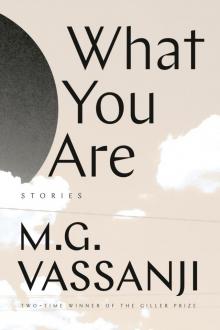 What You Are
What You Are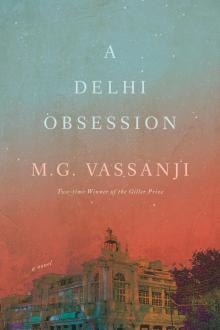 A Delhi Obsession
A Delhi Obsession When She Was Queen
When She Was Queen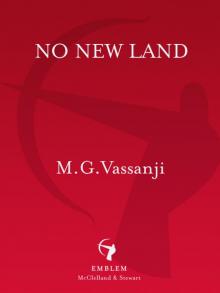 No New Land
No New Land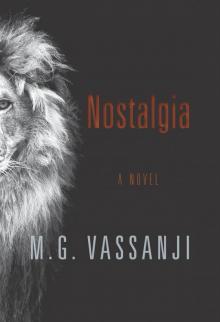 Nostalgia
Nostalgia Mordecai Richler
Mordecai Richler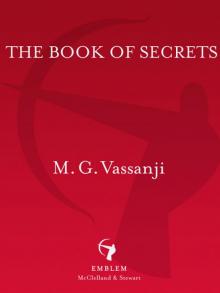 The Book of Secrets
The Book of Secrets Amriika
Amriika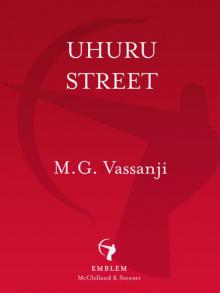 Uhuru Street
Uhuru Street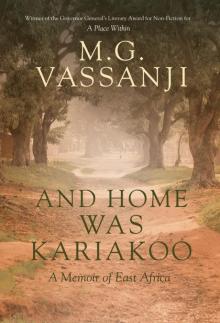 And Home Was Kariakoo
And Home Was Kariakoo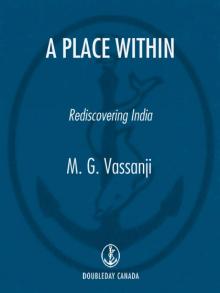 A Place Within
A Place Within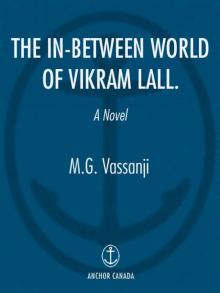 The In-Between World of Vikram Lall
The In-Between World of Vikram Lall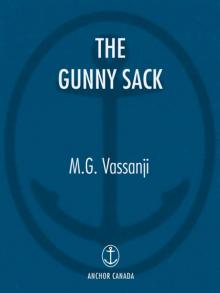 The Gunny Sack
The Gunny Sack